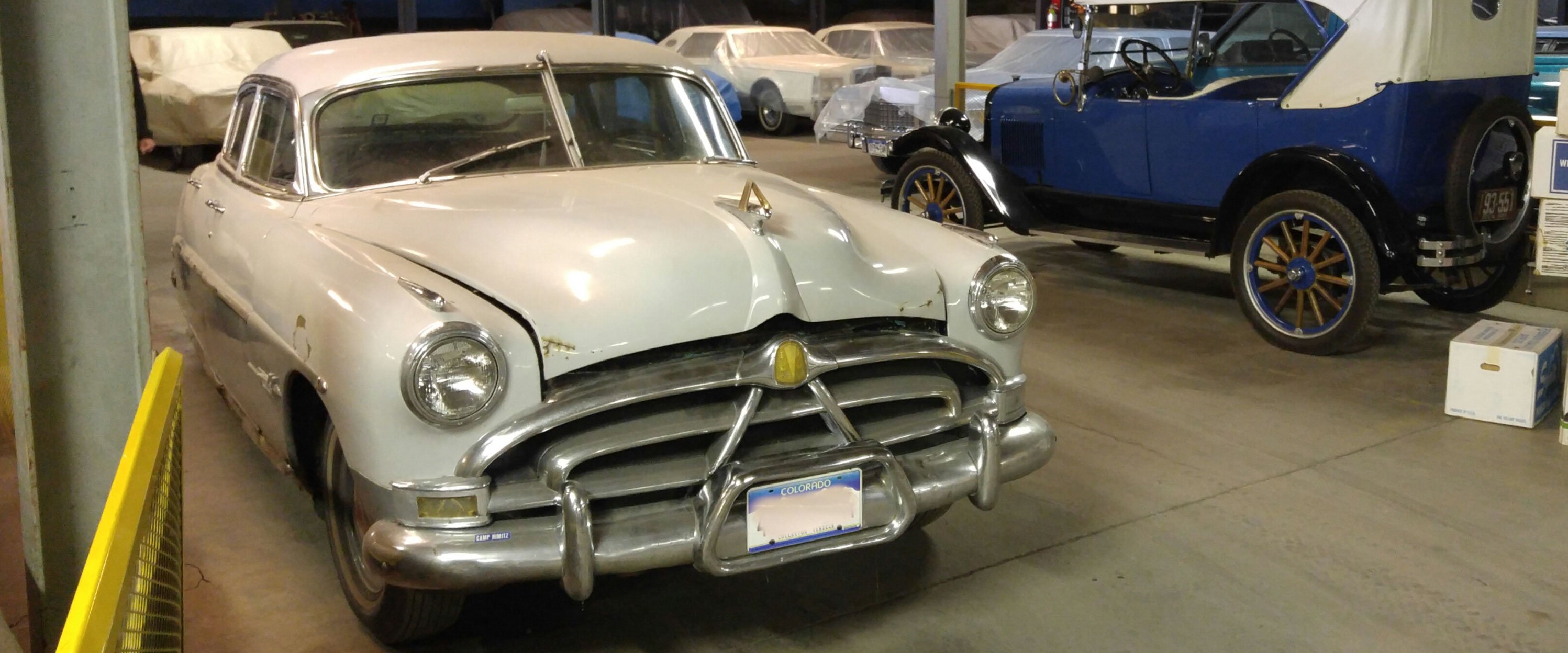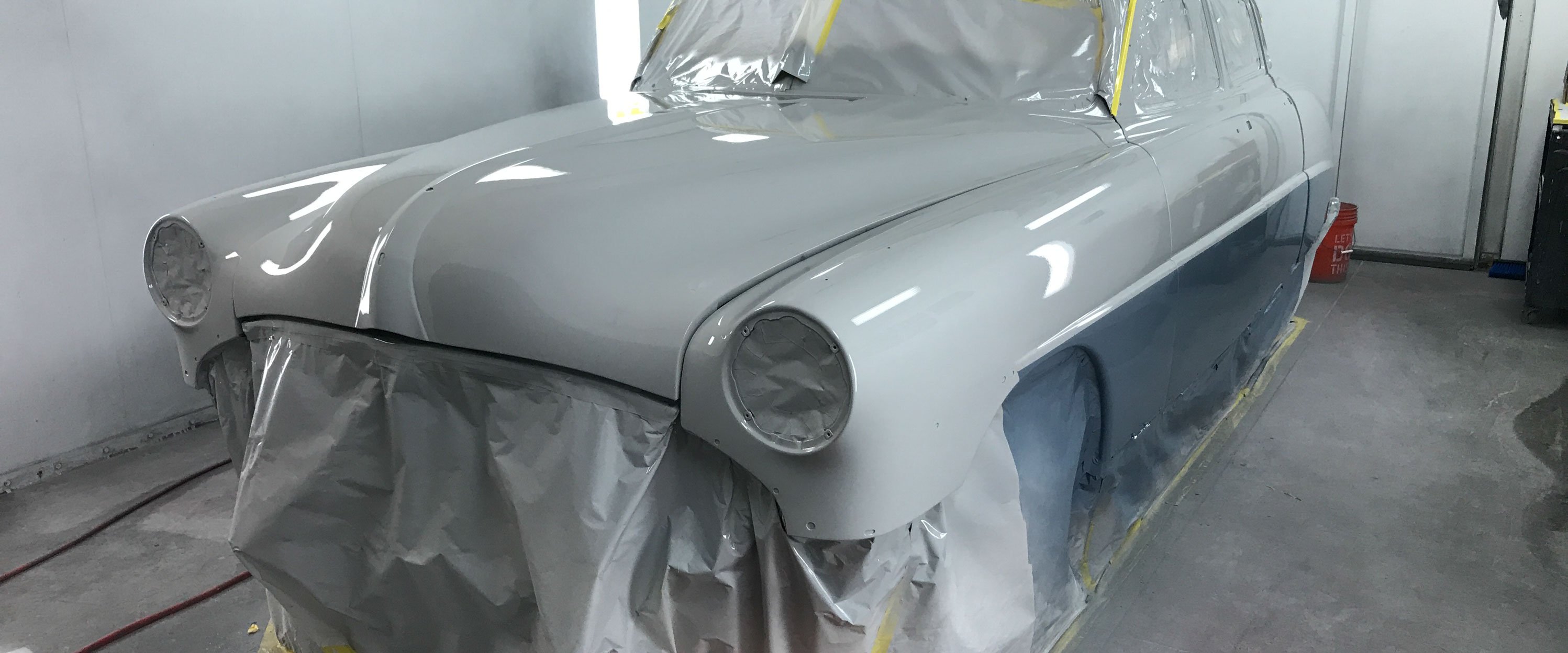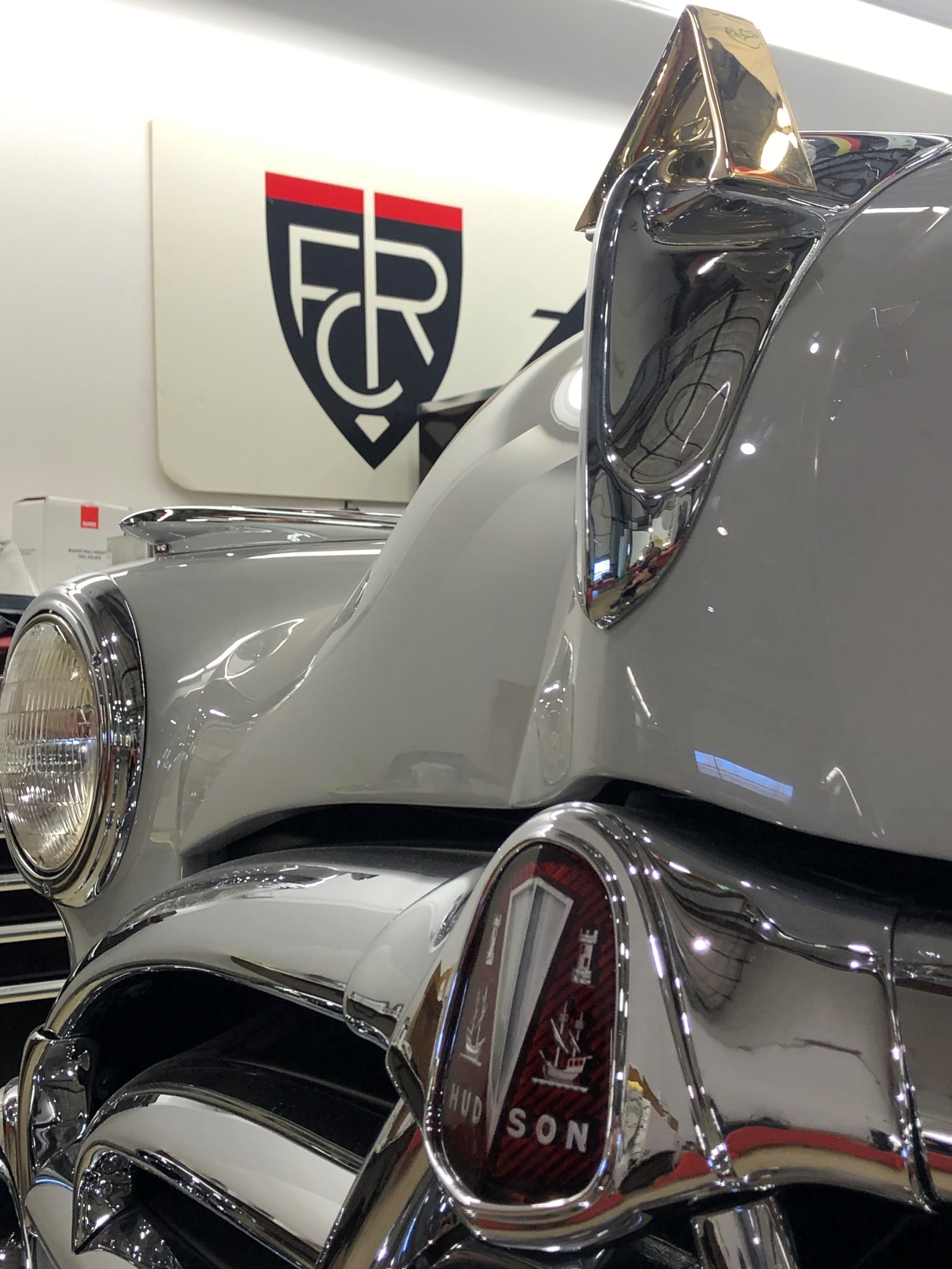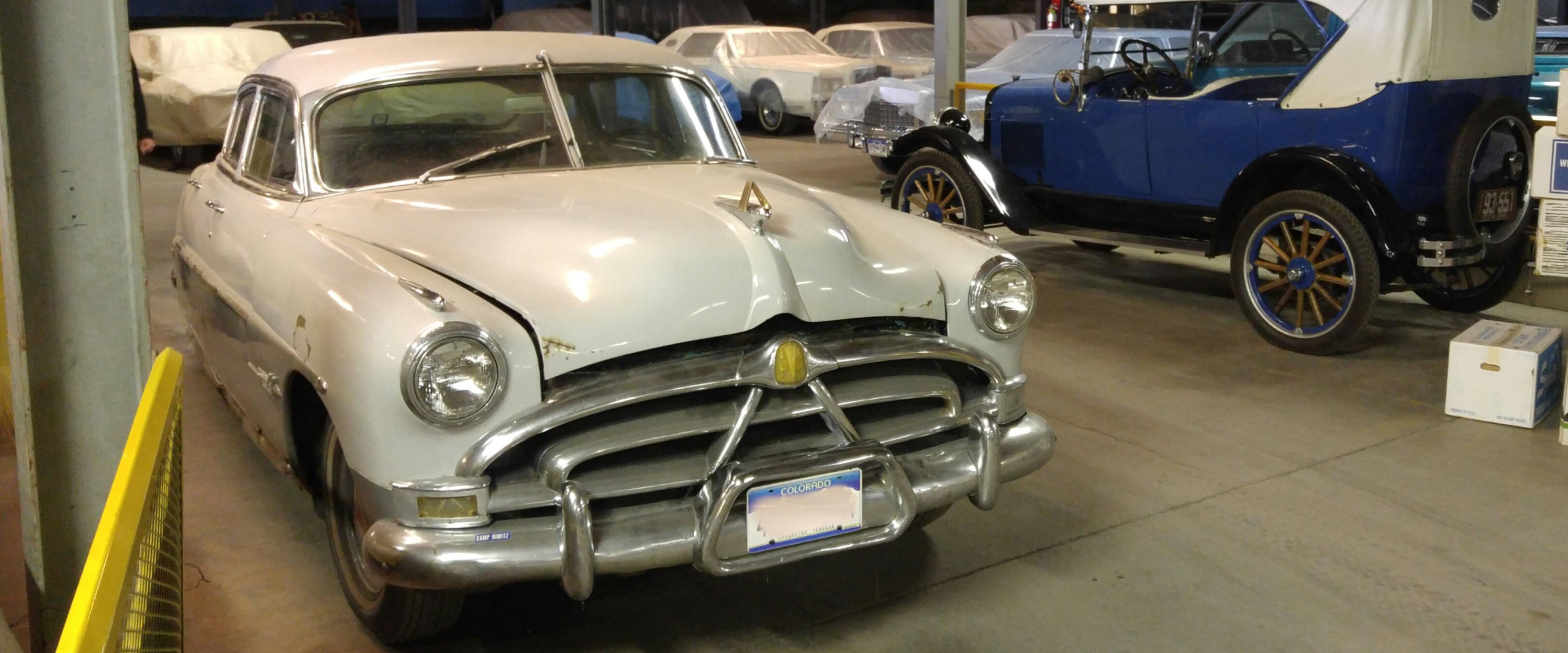Hudson and the Hornet
The Hudson Hornet is iconic for its forward-thinking design and the model's domination of NASCAR throughout the 1950's. The 'Fabulous Hudson Hornet' and the Hudson brand stand even today, as an American ode to racing.
Included in this article are shots of the 1952 Hudson Hornet sedan we have in for a full restoration. If you'd like to see more of the restoration process check it out here.
After four men started the Hudson Motor Car Company in 1909, the brand wanted to develop something different for American buyers. This ideology would lead Hudson to work as the opposition to many of the American brands.

Ford and Chevy would popularize the American V8 during this time. Meanwhile, Hudson’s first car had a small four-cylinder engine but sold over 4,000 units in its first year. This was considered a rousing success for the new company.

In 1916, Hudson would introduce their Super-6 or the Series-H engine. This would become the most popular engine from the brand and help them become the “world’s largest manufacturer of six-cylinder cars”.
Following the end of World War 2, American brands were hard-pressed to develop new models. While many returned to models from before the war, Hudson saw this as an opportunity to innovate. They toiled to create the 1948 Hudson Commodore and their work paid off, the Commodore would be one of the first "new-design" post-war cars.
The Commodore featured a unique “step-down” construction. This design would be an early predecessor to the ‘unibody’ we see in most passenger cars today.

The “step-down” design pushed the frame rails of the vehicle out beyond the wheels. This meant customers would "step down" over the frame rails to get into the car.
In 1951, Hudson introduced the first generation of Hornet. It kept the “step-down” design. The low-slung bodies and low center of gravity meant the Hudson Hornets could outhandle many other American offerings of the time. This, alongside support from Hudson would help to make the Hornet into a racing icon of the 50’s in NASCAR, IMCA, and AAA.

Throughout the 1950’s Hudson Hornets would dominate in NASCAR thanks to support from the brand who felt the developing racing pedigree would translate to more buyers. It was during this time the “Fabulous Hudson Hornet” livery premiered. While the brand saw huge success in multiple racing series, the wins did not translate to sales. Americans still preferred the power of a V8 over the handling of a Hudson.
In the mid-fifties, Hudson would merge with the Nash-Kelvinator brand and it would signal the end of the Hornet. For 1955, the car was redesigned and lost its “step-down” design. Hudson, now AMC would sell just over 10,000 of the Hornet. Less than half of what they had the year prior.
Just as quickly as it tore up the dirt, the Hudson Hornet lost its way. By 1958, the Hornet was canceled. AMC would continue to work as the opposition to “The Big Three” but in the end it too would be lost just three decades later.
Haven't gotten your fill of Farland Fun? Go check out our Youtube, Facebook and Instagram!
Have a classic restoration of your own? Want to know what we have around the Shop and Showroom?
Give us a call at 303-761-1245 or Email us: info@farlandcars.com
